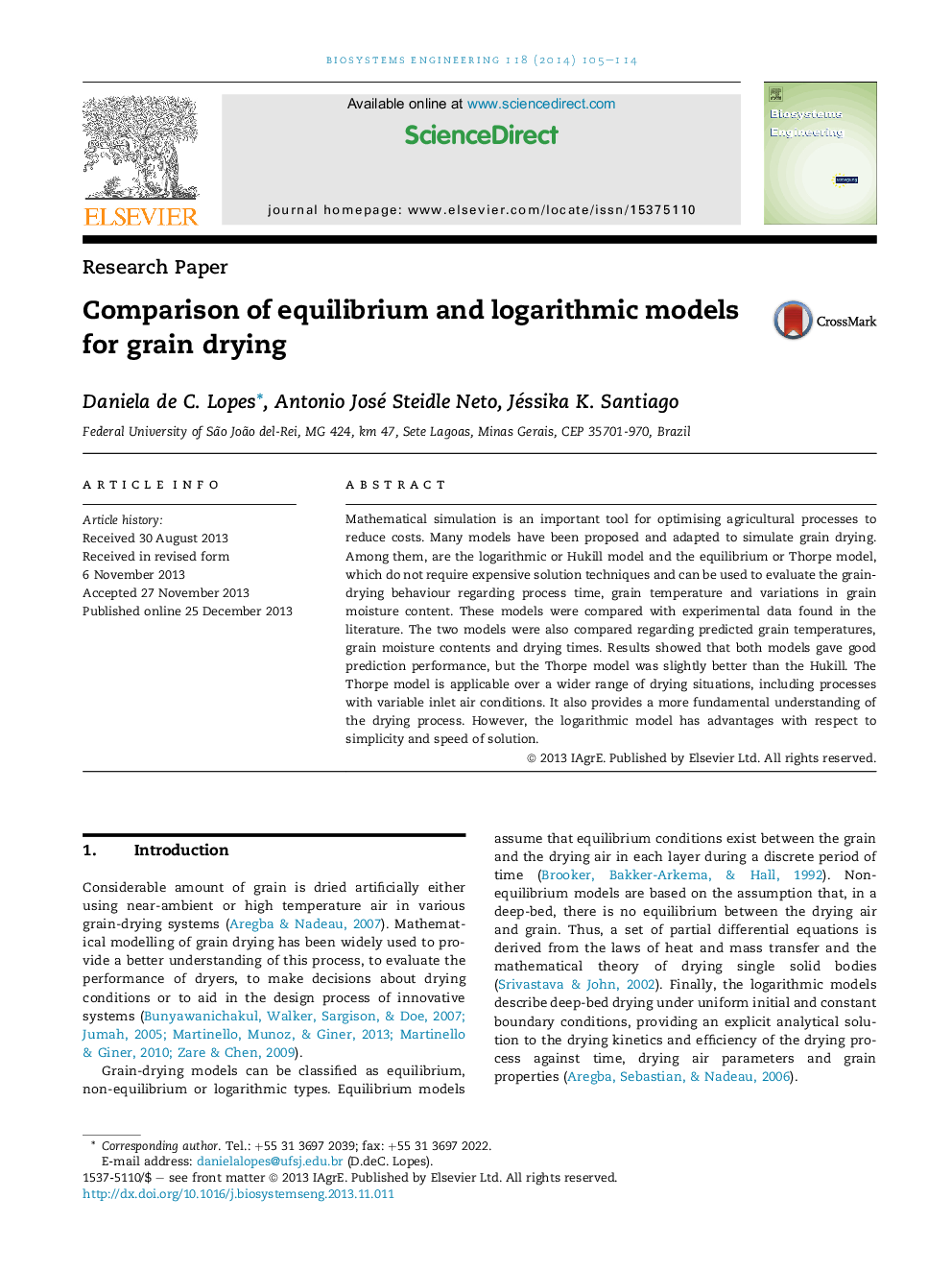| Article ID | Journal | Published Year | Pages | File Type |
|---|---|---|---|---|
| 1711212 | Biosystems Engineering | 2014 | 10 Pages |
•Results from two grain-drying models were compared with experimental data.•The models were compared between themselves to verify differences between them.•Both the logarithm and equilibrium models gave good prediction performance.•Equilibrium model provides a more fundamental understanding of the drying process.•Logarithmic model has advantages with respect to simplicity and speed of solution.
Mathematical simulation is an important tool for optimising agricultural processes to reduce costs. Many models have been proposed and adapted to simulate grain drying. Among them, are the logarithmic or Hukill model and the equilibrium or Thorpe model, which do not require expensive solution techniques and can be used to evaluate the grain-drying behaviour regarding process time, grain temperature and variations in grain moisture content. These models were compared with experimental data found in the literature. The two models were also compared regarding predicted grain temperatures, grain moisture contents and drying times. Results showed that both models gave good prediction performance, but the Thorpe model was slightly better than the Hukill. The Thorpe model is applicable over a wider range of drying situations, including processes with variable inlet air conditions. It also provides a more fundamental understanding of the drying process. However, the logarithmic model has advantages with respect to simplicity and speed of solution.
